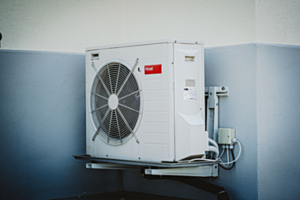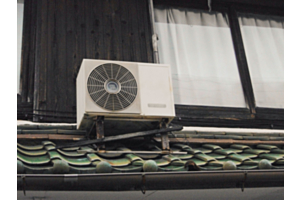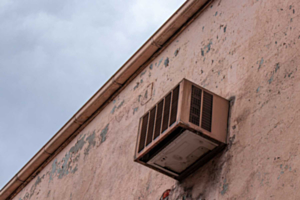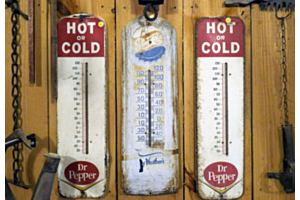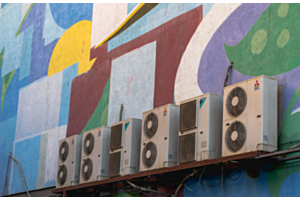Is VRF Energy Efficient?

Today, energy efficiency is a major factor that can impact whether we buy a heating or cooling unit as much as–if not more so–the price of said unit. If your current air conditioner or heater is an energy hog, you might consider a VRF split system. Is VRF really all that energy efficient?
Keep reading to find out!
What Is VRF and How Does It Work?
First, let’s begin with a quick recap of what a VRF split system is. Short for variable refrigerant flow, VRF systems rely on refrigerant that travels through a condenser unit or several. As the refrigerant moves, it’s cooled or heated according to the needs of a room.
The more complex three-piped VRF systems can act as a heater and cooler all in one. Even better is that rather than heat parts of a home or building at one time and then cool them later, a three-piped VRF system can handle both heating and cooling at the same time.
That’s not the case with a two-piped VRF split system, which can only heat or cool a space one at a time.
Is VRF Energy-Efficient?
In 2016, ScienceDirect published a lengthy detailed study about the results of an experiment conducted during the International Conference on Recent Advancement in Air Conditioning and Refrigeration that same year.
The study compared VRF systems with fan-coil plus fresh air or FPFA systems, which are powered by a fan system. According to the findings shared in the report, VRF systems have a higher energy efficiency than FPFA systems by a rate of 11.7 percent.
The conference also pitted VRF systems against variable air volume or VAV systems. The way these systems work is that the air within the VAV system is set to a variable temperature. That air is then filtered out to a commercial building or home.
So which is more energy-efficient, VAV or VRF systems? The answer is VRF by 22.2 percent more!
This 2013 General Services Administration report entitled Variable Refrigerant Flow Systems suggests that, compared to similar heating and cooling equipment, VRF systems can save energy by up to 55 percent.
The numbers don’t lie. You wouldn’t have to worry about energy efficiency with a VRF system in your home or commercial building, especially if you have previously owned an FPFA or VAV system.
Looking for a VRF System for Your Home or Commercial Business? Call PowerSave AC Today
Are you ready to explore the world of VRF systems? At PowerSave AC, our team specializes in heating and cooling systems like VRF, including ductless mini splits. Our energy savings calculator will let you determine just how much money you can save on your energy bill once you make the choice to invest in a more energy-efficient option.
We also have an HVAC load calculator for accurately determining how much heating and cooling your home or commercial building needs. For more information or to shop our units and accessories today, visit our website or call us at 877-297-6594.
Sources:


